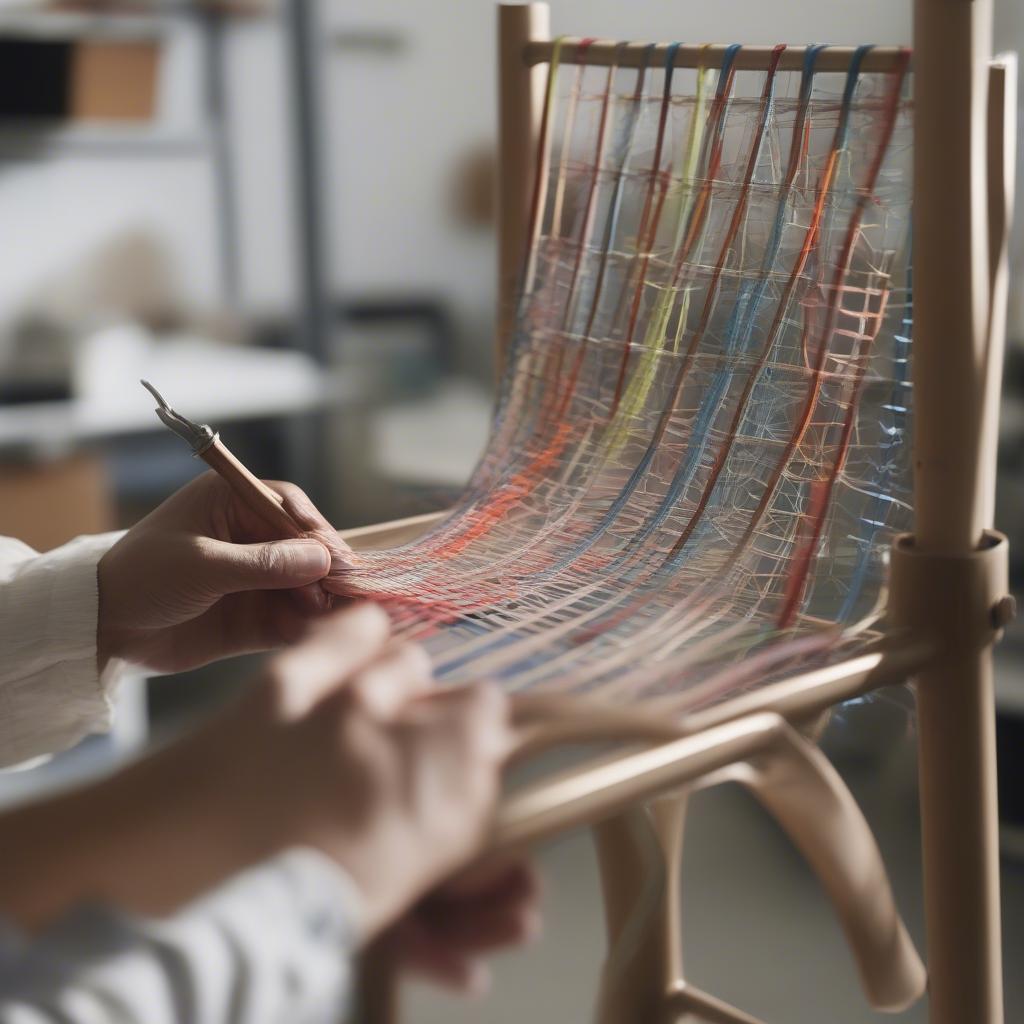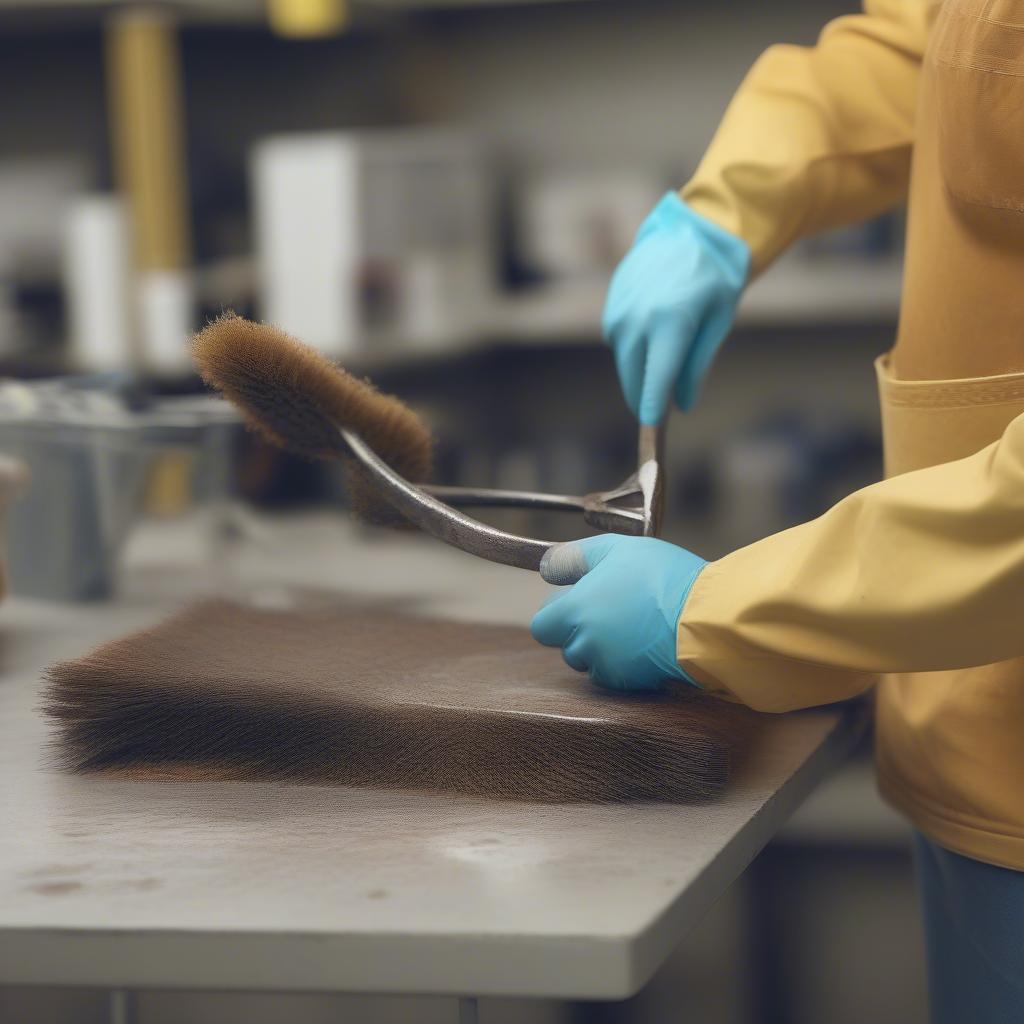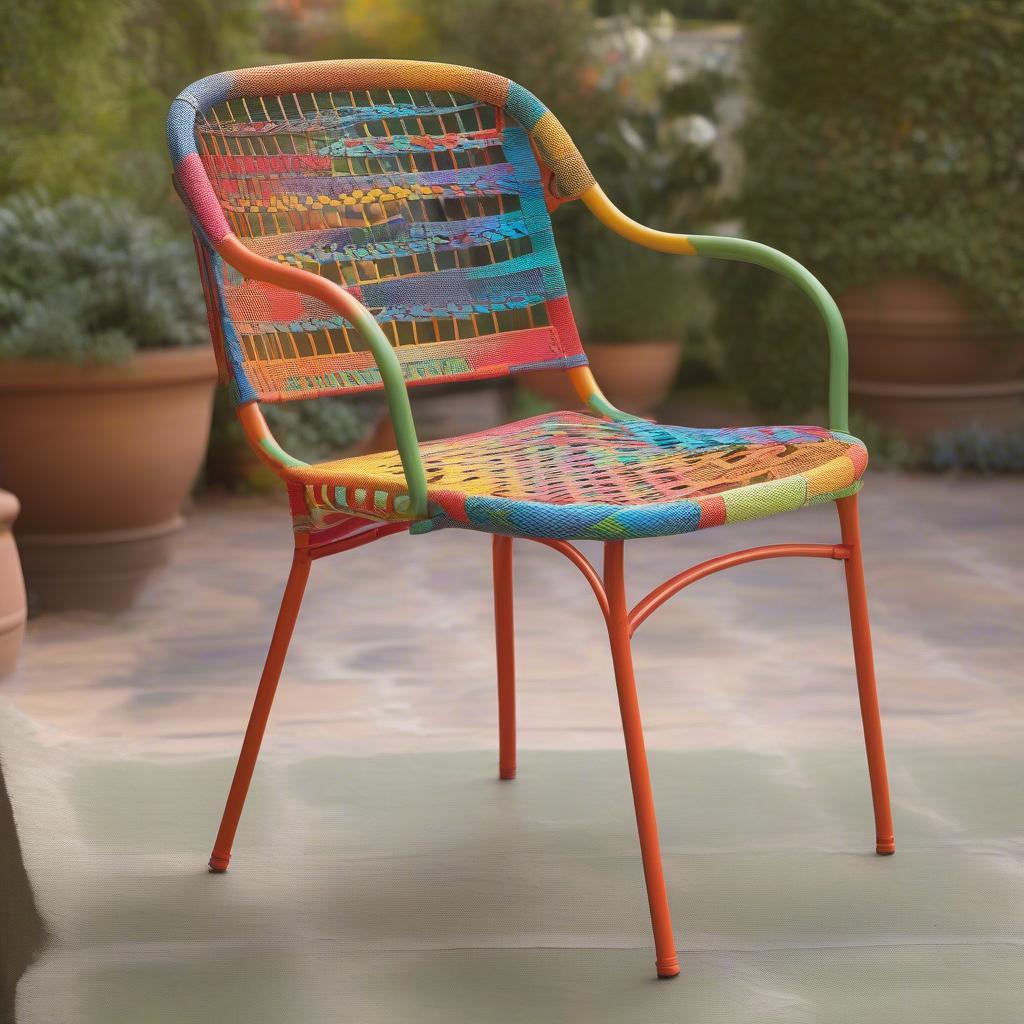Weave Chair
How to Weave a Metal Chair
Learning How To Weave A Metal Chair can transform a tired piece of furniture into a stylish and comfortable seat. Whether you’re looking to revamp a vintage find or add a personal touch to your patio set, weaving a new seat is a rewarding project. This guide will cover various techniques and materials to help you master the art of metal chair weaving.
 Weaving a metal chair seat with colorful webbing
Weaving a metal chair seat with colorful webbing
Choosing the Right Material for Your Metal Chair Weave
The first step in how to weave a metal chair is selecting the perfect material. Options range from traditional reed and wicker to more modern materials like vinyl webbing and paracord. Each material offers unique benefits in terms of durability, comfort, and aesthetic appeal. For example, vinyl webbing is weather-resistant and easy to clean, making it ideal for outdoor furniture. Paracord is known for its strength and vibrant color options, perfect for creating a bold statement piece. how to weave a metal chair seat with webbing provides detailed instructions for using webbing, a popular choice for beginners. Consider your chair’s location, desired look, and your weaving experience when choosing your material.
Preparing Your Metal Chair Frame
Before you begin weaving, ensure your metal chair frame is clean and free of rust or debris. A thorough cleaning will ensure a smooth weaving process and a more professional finished product. If your chair has existing webbing or material, remove it carefully to avoid damaging the frame. You might want to take pictures of the original weave pattern for reference, especially if you’re aiming to replicate it.
Basic Weaving Techniques for Metal Chairs
Several weaving patterns can be applied to a metal chair, from simple over-under weaves to more complex designs. how to weave a metal chair seat with paracord explores the versatility of paracord, demonstrating how to create intricate knots and patterns. The basic over-under weave is a great starting point for beginners. This involves passing the material over and under the frame in a consistent pattern, creating a sturdy and visually appealing seat. As you gain confidence, you can experiment with different patterns and techniques.
 Preparing a metal chair frame for weaving
Preparing a metal chair frame for weaving
How to Start and Finish Your Weave
Starting and finishing your weave neatly is essential for a professional look. Begin by securing your chosen material firmly to the frame, ensuring it won’t unravel during the weaving process. As you approach the end, carefully tuck in loose ends and secure them tightly. A clean finish will enhance the durability and aesthetic appeal of your woven chair seat. You can find inspiration for vintage metal chair weaves on vintage meatal lawn rocker chair basket weave seat.
Maintaining Your Woven Metal Chair
Once you’ve mastered how to weave a metal chair, proper maintenance will ensure its longevity. Regular cleaning with a damp cloth will remove dirt and dust. For outdoor furniture, consider using a protective cover to shield it from the elements. Avoiding prolonged exposure to direct sunlight and moisture will help prevent fading and deterioration.
“A well-maintained woven chair is a testament to the craftsmanship and care put into its creation. Regular upkeep will keep your chair looking its best for years to come.” – Amelia Reed, Furniture Restoration Specialist
Weaving Your Way to a Unique Piece
weave metal chair features various weaving projects, showcasing the diversity of styles and techniques. Weaving a metal chair is more than just a DIY project; it’s an opportunity to express your creativity and personalize your space. With patience and practice, you can transform a simple metal frame into a beautiful and functional piece of art.
 A newly woven metal chair
A newly woven metal chair
“Don’t be afraid to experiment with different materials and patterns. The beauty of weaving lies in its versatility and the ability to create something truly unique.” – John Carpenter, Master Weaver.
In conclusion, learning how to weave a metal chair is a rewarding endeavor that allows you to revive old furniture and add a touch of personalized style to your home. By selecting the right materials, mastering basic techniques, and following proper maintenance procedures, you can create a durable and beautiful piece that you’ll cherish for years to come. Explore the world of mid-century modern chair weaving at mid-century metal dining chair weave seat.
FAQ
-
What is the best material for weaving a metal chair? The best material depends on your needs and preferences. Vinyl webbing is durable and weather-resistant, while paracord is strong and comes in various colors.
-
How do I start weaving a metal chair seat? Start by securing your chosen material firmly to the frame, ensuring it won’t unravel during the weaving process.
-
What are some common weaving patterns for metal chairs? The basic over-under weave is a great starting point for beginners. More advanced patterns include the basket weave and herringbone.
-
How do I maintain my woven metal chair? Regularly clean your woven chair with a damp cloth and protect it from the elements.
-
Where can I find inspiration for metal chair weaving patterns? Online resources, craft books, and vintage furniture stores are excellent sources of inspiration.
-
How long does it take to weave a metal chair seat? The time required varies depending on the complexity of the pattern and the size of the chair.
-
What tools do I need for metal chair weaving? Basic tools include scissors, a measuring tape, and possibly pliers for securing tight weaves.
Do you have more questions?
- How to repair a woven chair?
- What are other suitable materials for weaving?
- Where to find weaving workshops near me?
Please contact our Hotline: +84 388 951 999, or visit our offices at Hanoi, Vietnam or Tech Avenue, Suite 12, San Francisco, CA 94105, USA. We offer 24/7 customer support.
